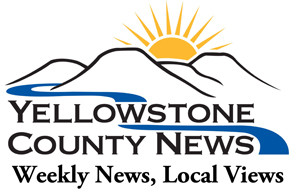The diverging diamond interchange proposed as part of the Billings Bypass at Johnson Lane and Interstate 90 in Lockwood will be built two to three years earlier than originally planned.

The Bypass, which will connect Main Street in the Heights to the Johnson Lane Interchange, is being built in phases. The Interchange phase was originally scheduled to be the last of the six phases; it is now scheduled as the third phase.
The first phase, the Five Mile Road segment north of the Heights, will begin construction this fall, to be followed by the second phase, the Yellowstone River bridge phase, which is to be let for construction bids in 2020.
The Johnson Lane Interchange is now planned to begin construction in 2022, according to Doug Enderson, a transportation engineer with DOWL of Billings, the engineering firm engaged by the Montana Department of Transportation (MDT) to design the Billings Bypass. Enderson is overseeing the project.
The change in the scheduling of the Bypass phases is the result of an annual review that MDT conducts each year of their five-year plan. Enderson explained that MDT annually assesses and reviews their work plan, taking into account budgets, priority changes and other factors impacting projects.
The other three phases of the Bypass include a segment with a railroad overpass extending from the bridge to Coulson Road, bids for which will be let in 2023; followed by the Coulson Road segment connecting to the Johnson Lane Interchange in 2024; and the last segment, that which will parallel Mary Street in the Heights, is to be let in 2025.
The overall design for the Billings Bypass is 30 percent complete, reported Enderson. The interchange project is being delivered as a CM/GC project (Construction Manager/General Contractor), a process in which the state hires an engineer – in this case DOWL, who will then work with a Construction Manager and General Contractor to develop the final design for the project. MDT will hire the Construction Manager/General Contract for the Johnson Lane Interchange this year, based upon the results of a request for qualifications and proposals, which will also consider the cost of their services. The process results in projects that are constructed faster and are more cost effective, said Enderson.
The Johnson Lane Interchange will be the first diverging diamond interchange (DDI) to be built in Montana, although there are two or three other DDI interchanges being planned for other areas of the state. A diverging diamond interchange reduces the number of vehicle conflict points which makes it safer, said Enderson. The Johnson Lane Interchange project includes other changes to the area, including moving the intersection of the North Frontage Road with Johnson Lane, further to the north, as well as making improvements to Becraft Lane and to Cole Street, which will become more important in funneling traffic into the main intersection.
The looming question for the entire Bypass project is what will the finished road be named?
Although it’s come to be called the Billings Bypass, the project is really an urban arterial rather than a bypass, said Enderson, and its name will undoubtedly be changed. Usually, the state will solicit naming ideas from the local governmental entity to name it.
Anyone with any questions about the Bypass project is encouraged to visit www.mdt.mt.gov/pubinvolve/billingsbypass or to email billingsbypass@dowl.com or call Lisa Olmsted at 406-294-9668.

